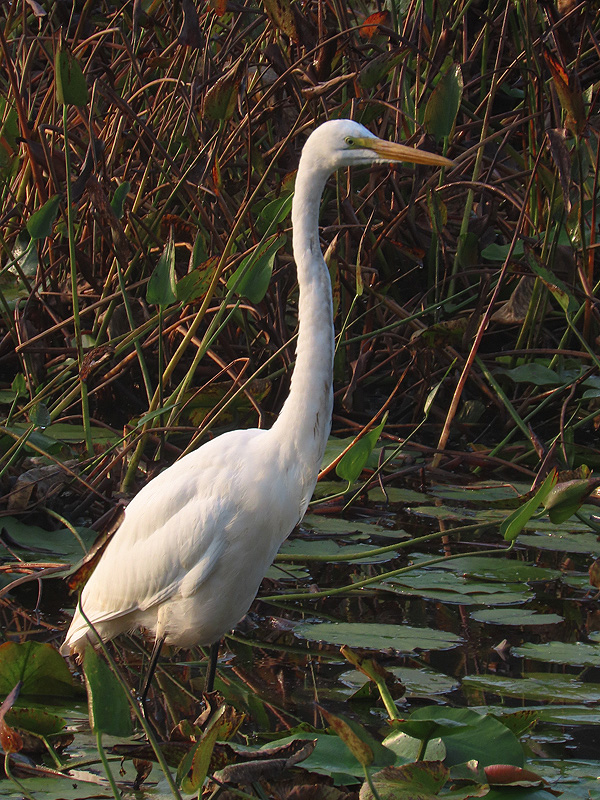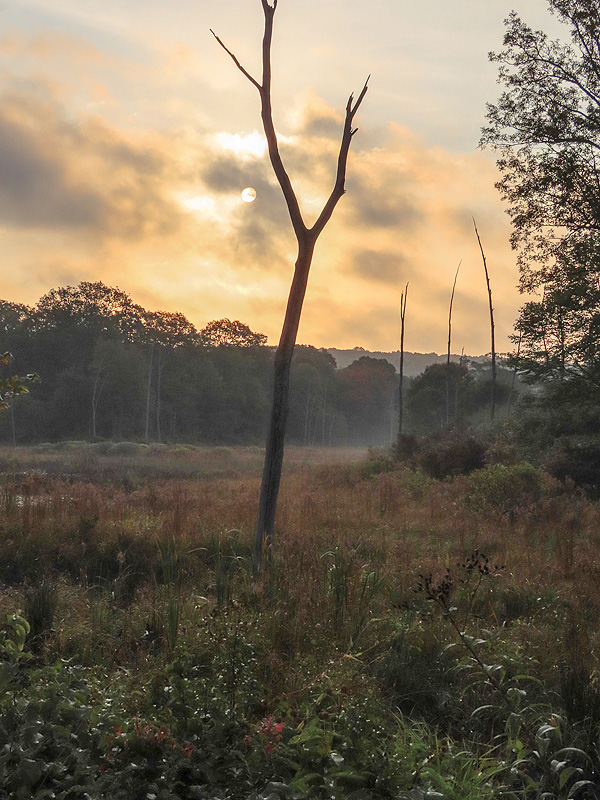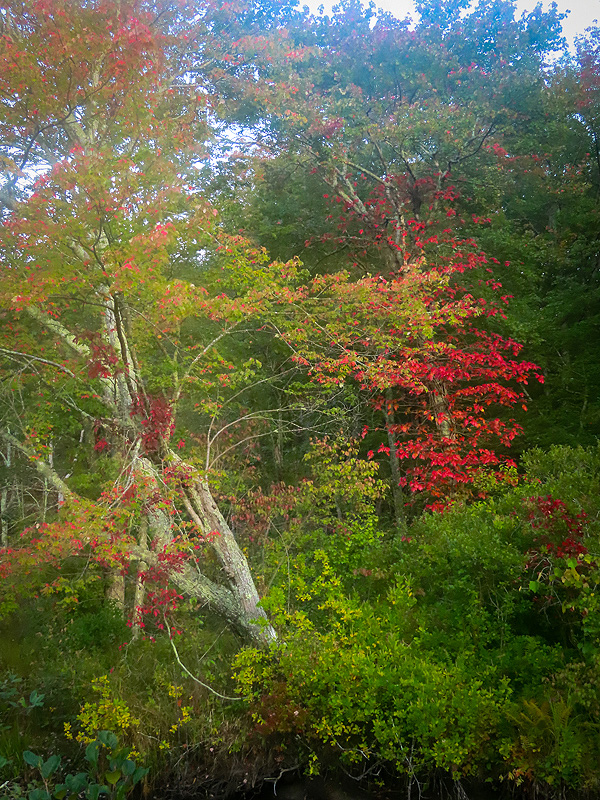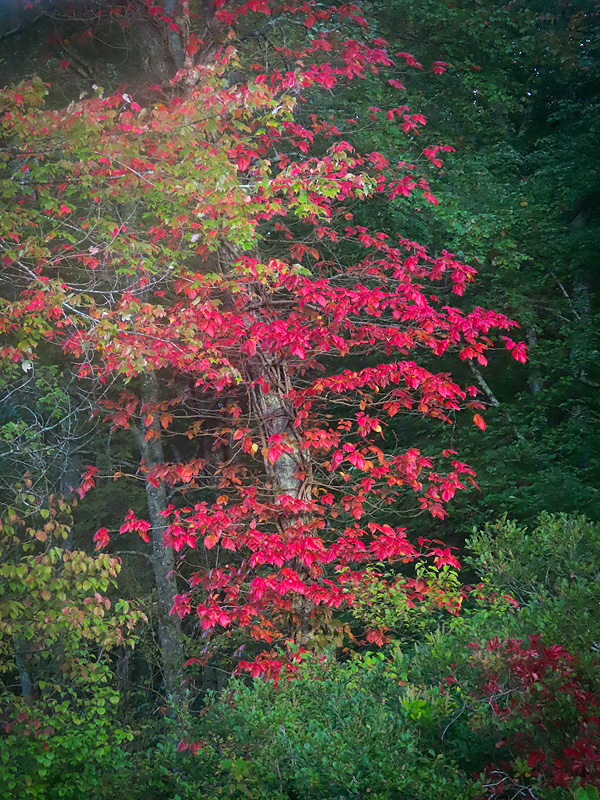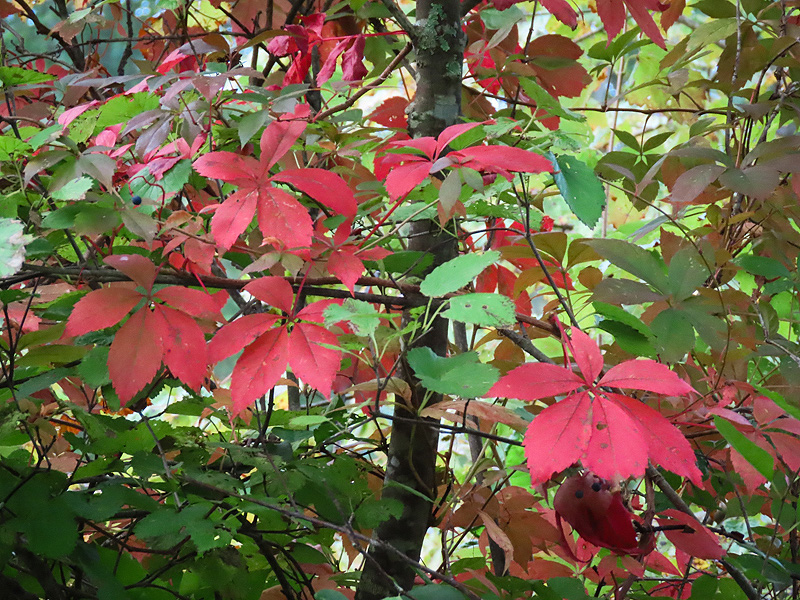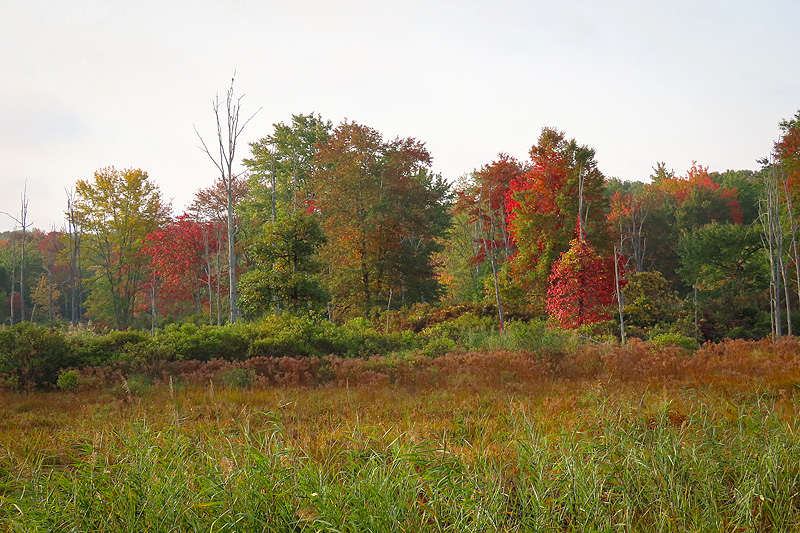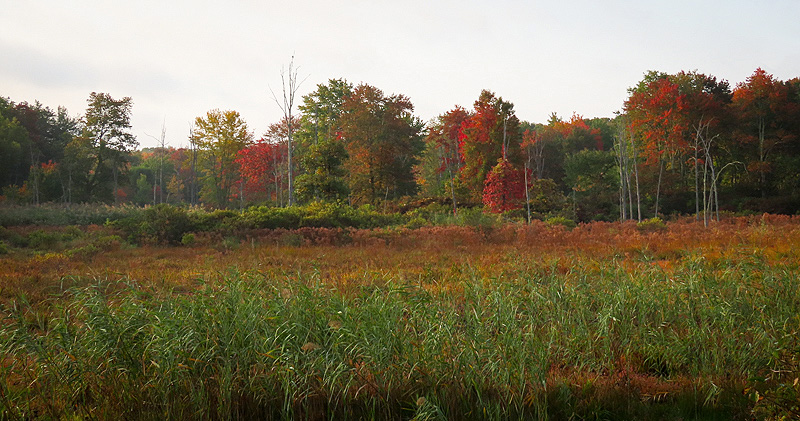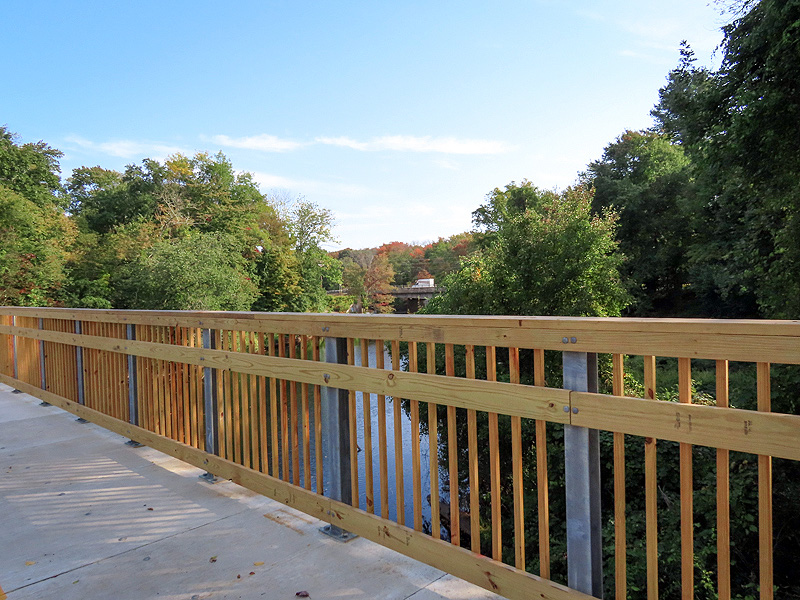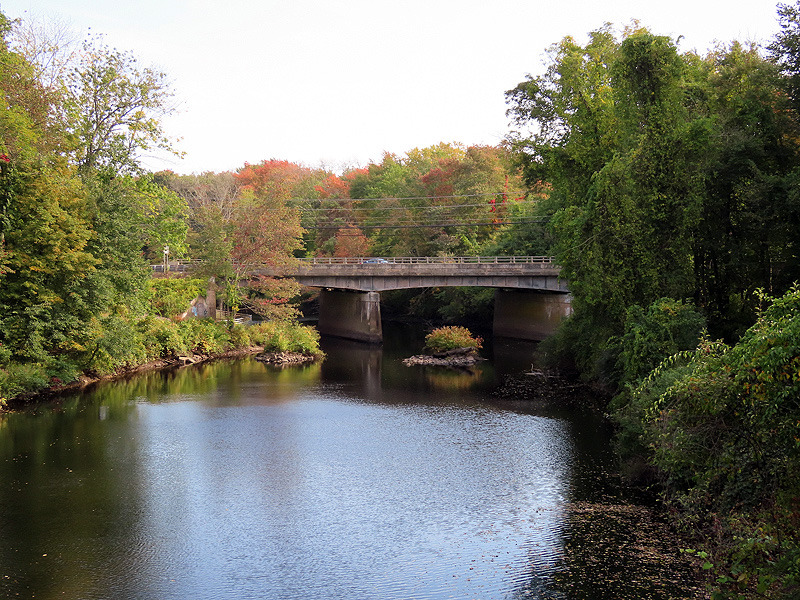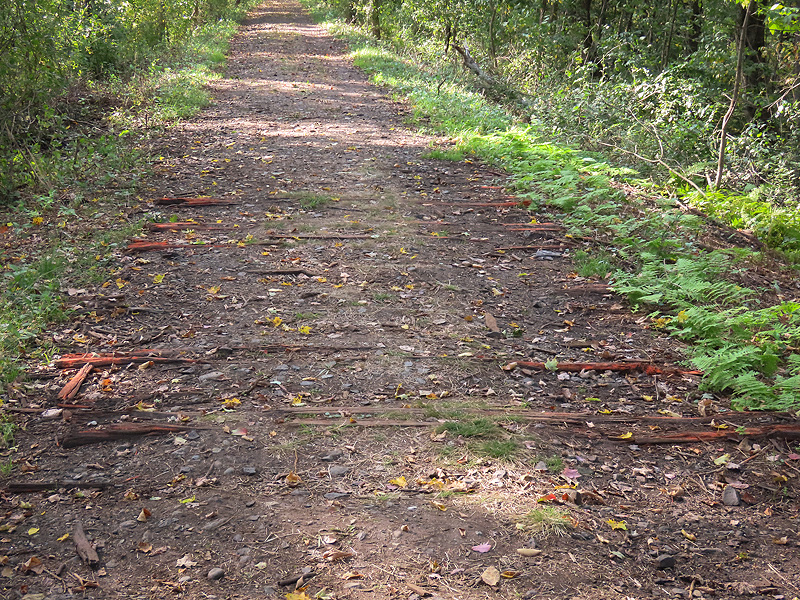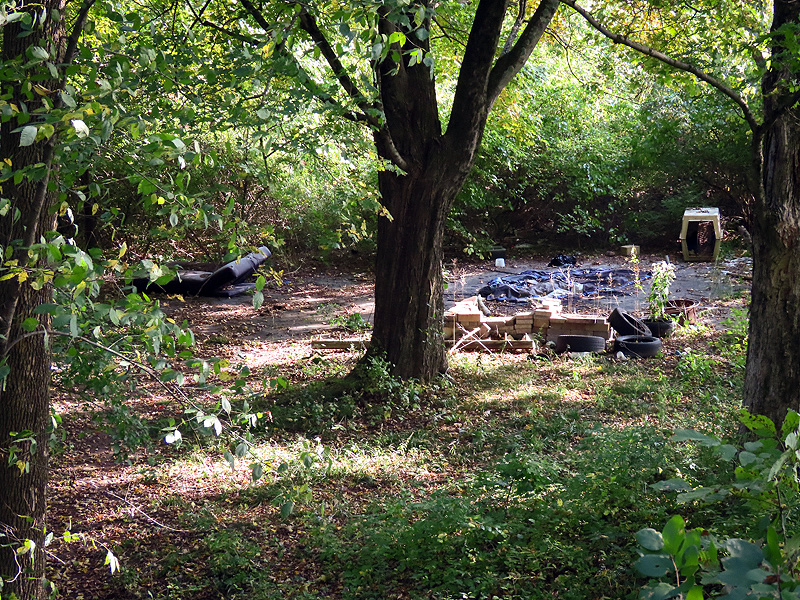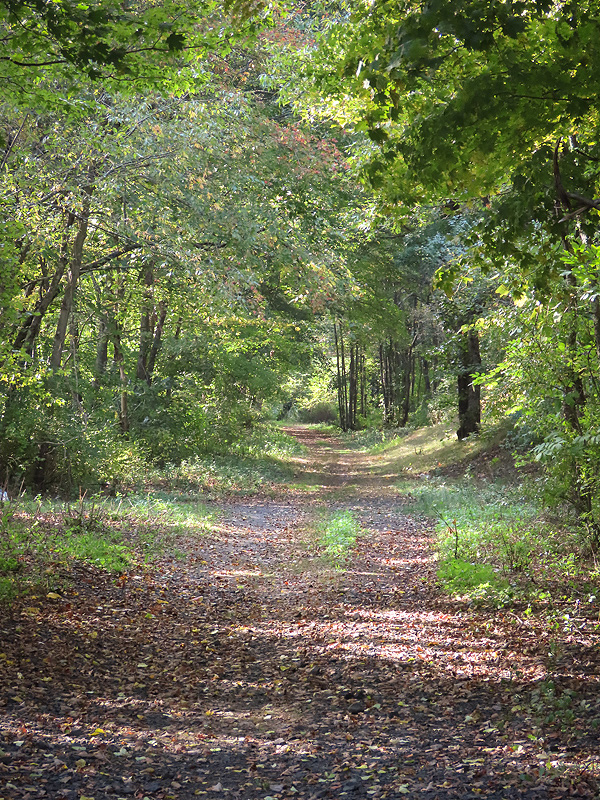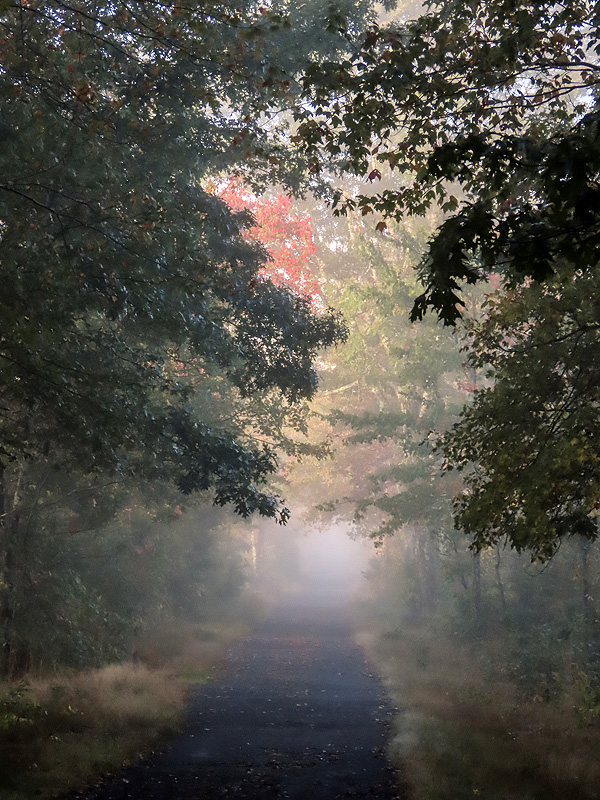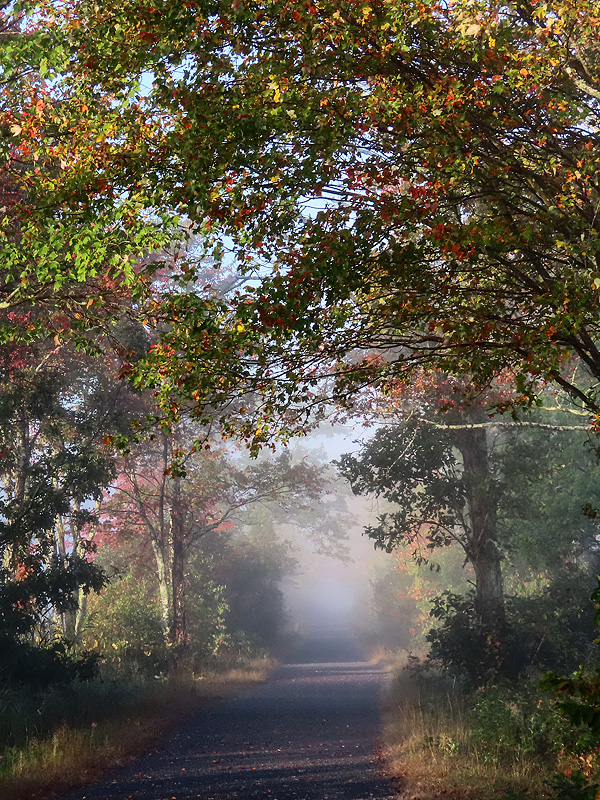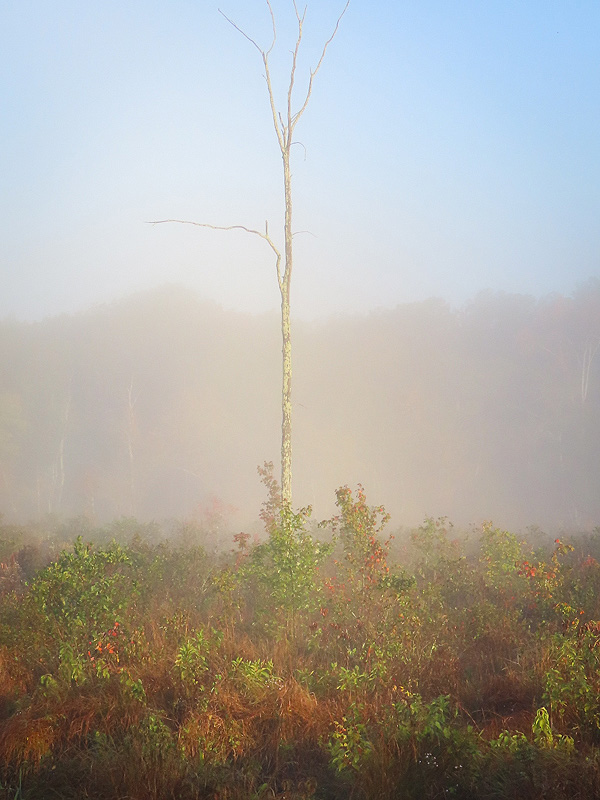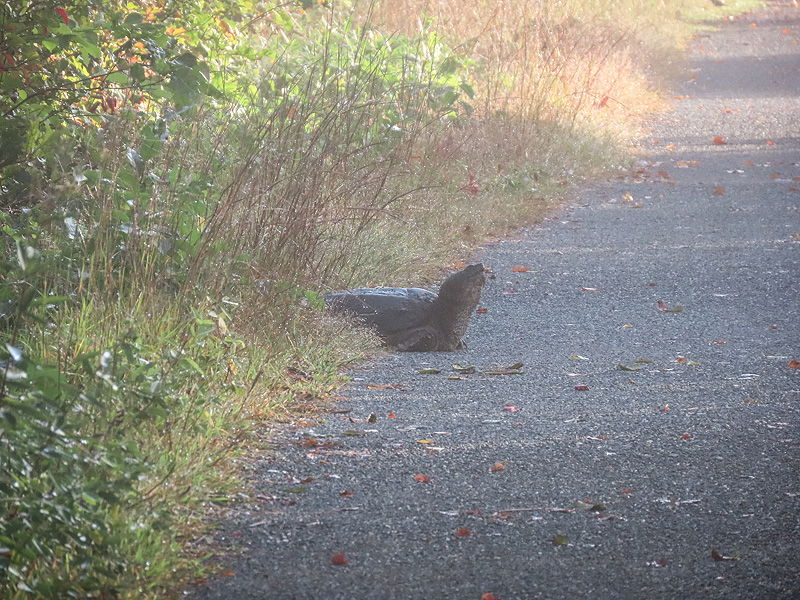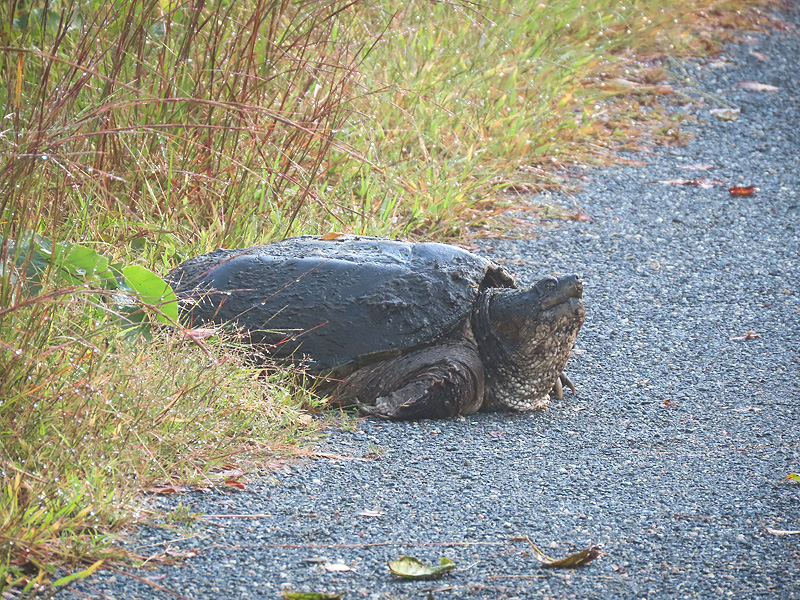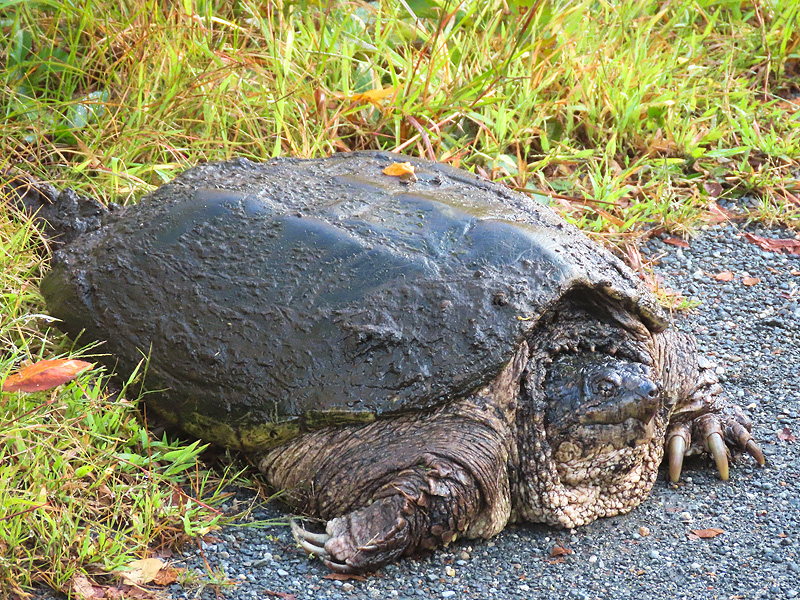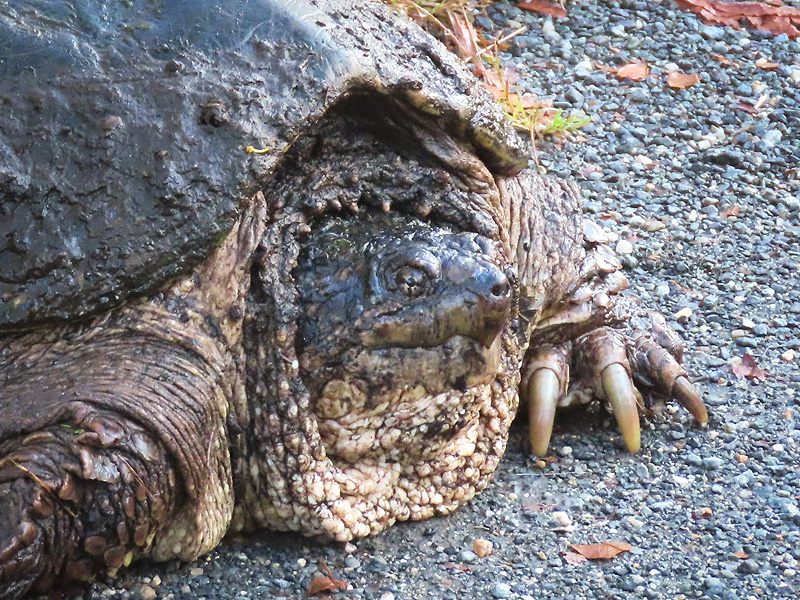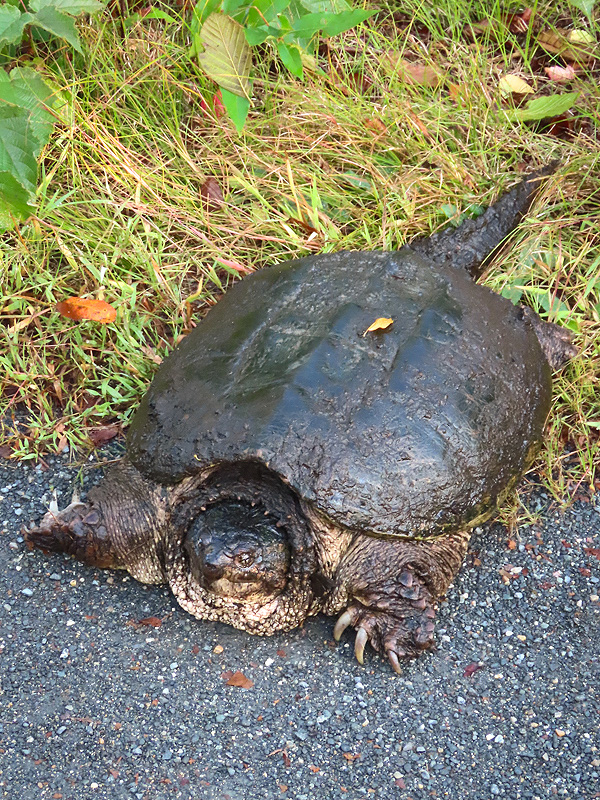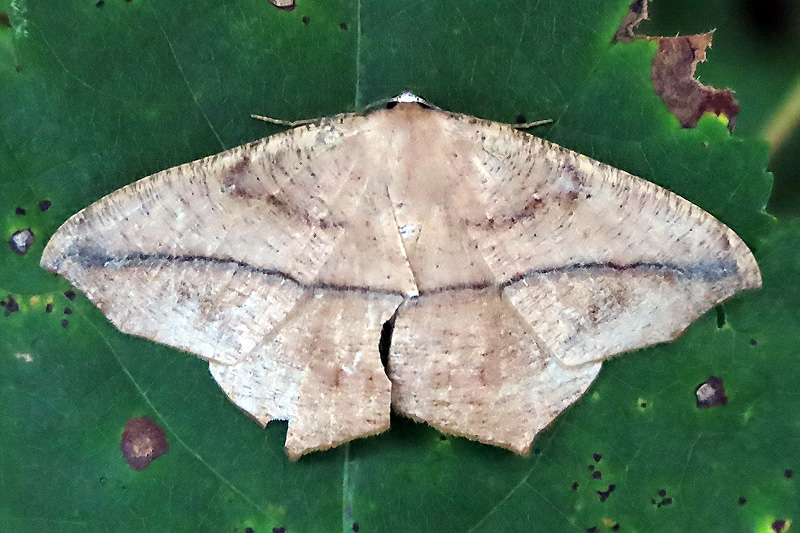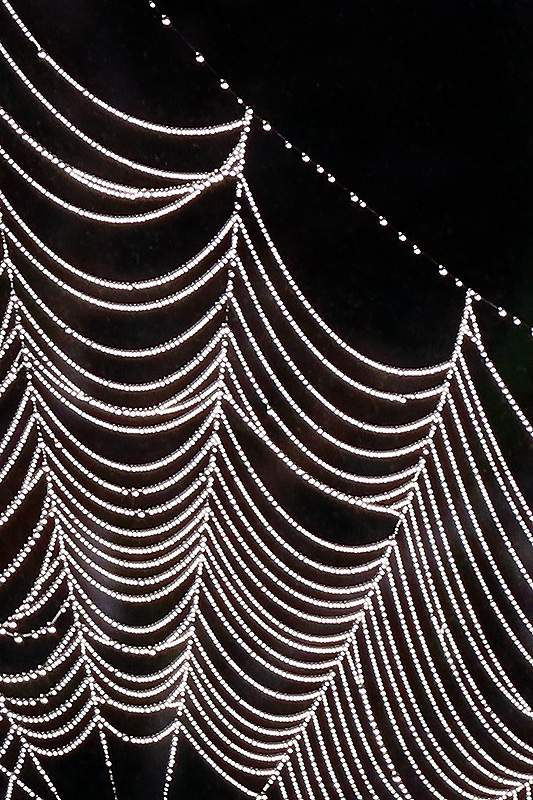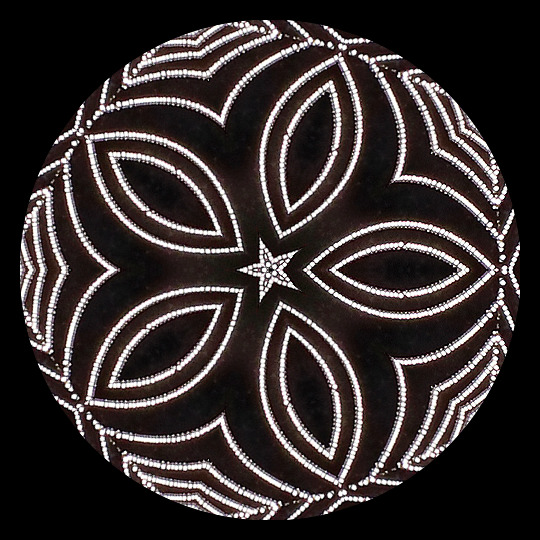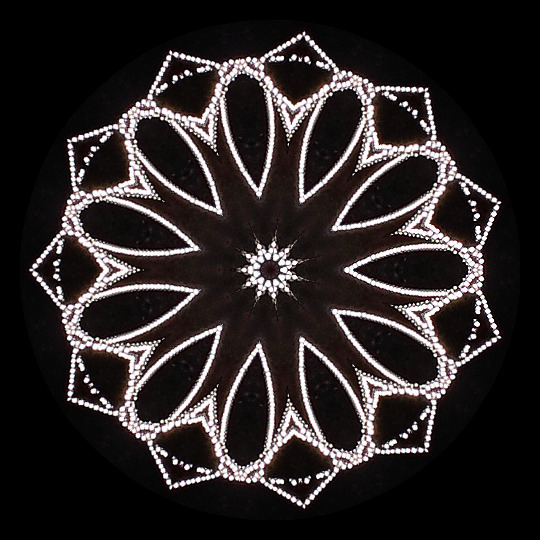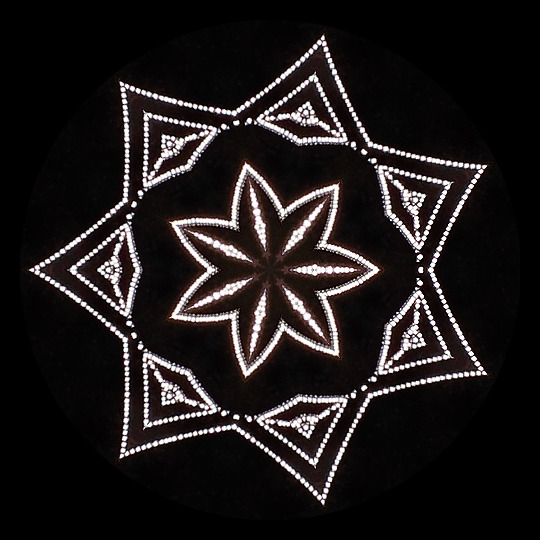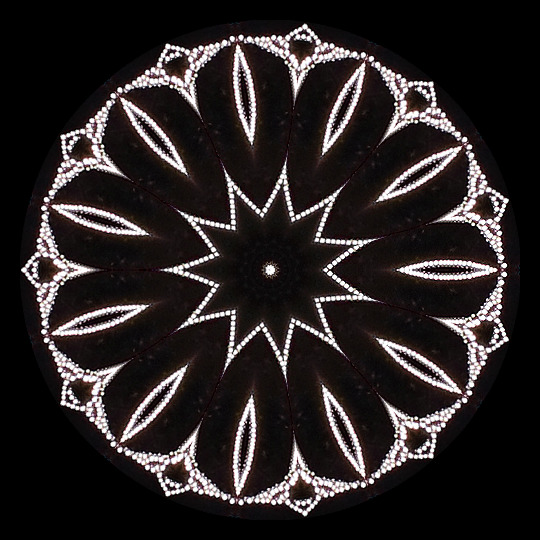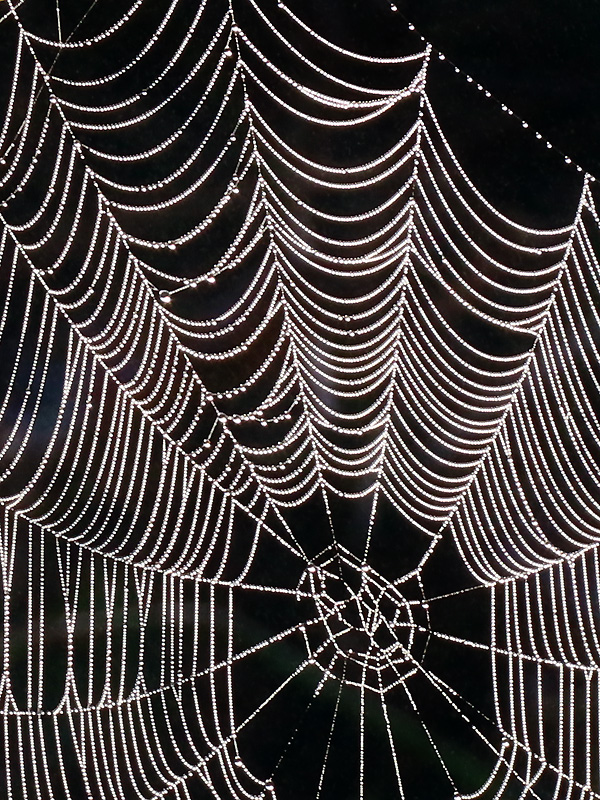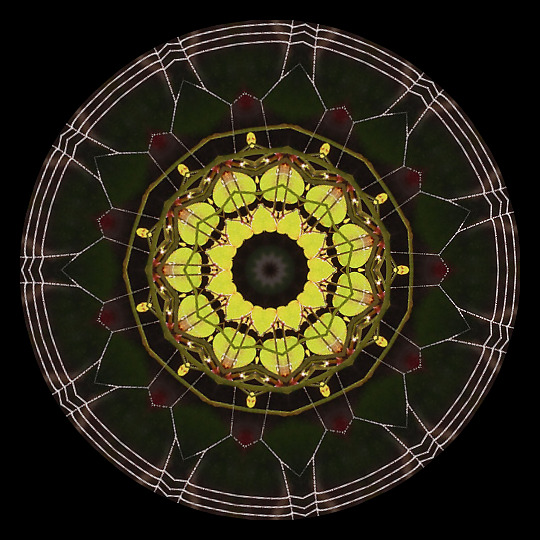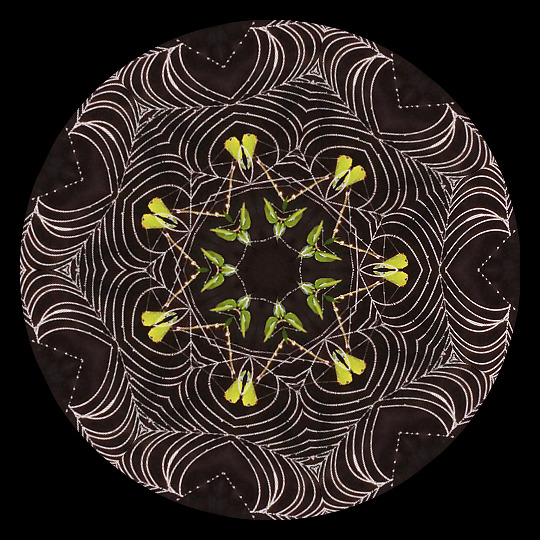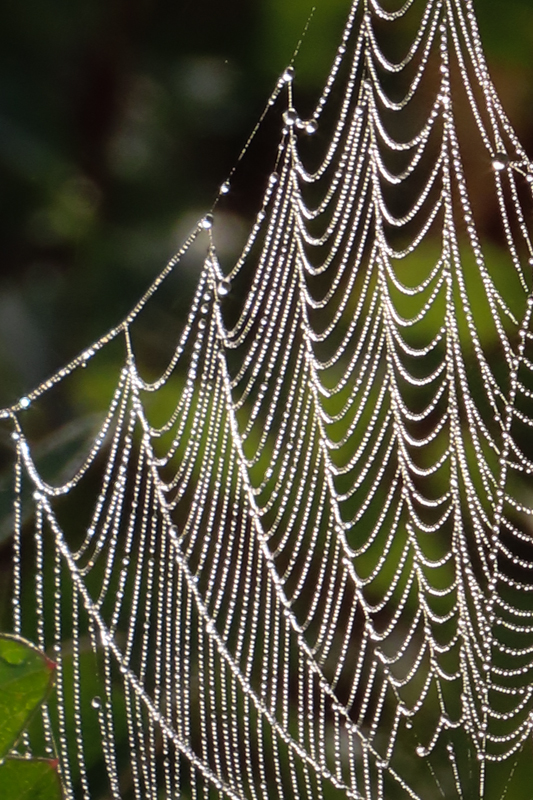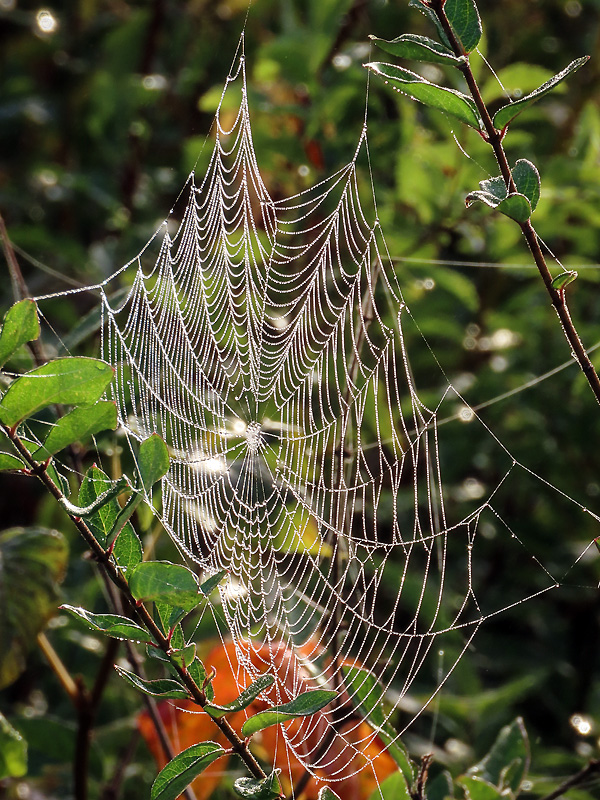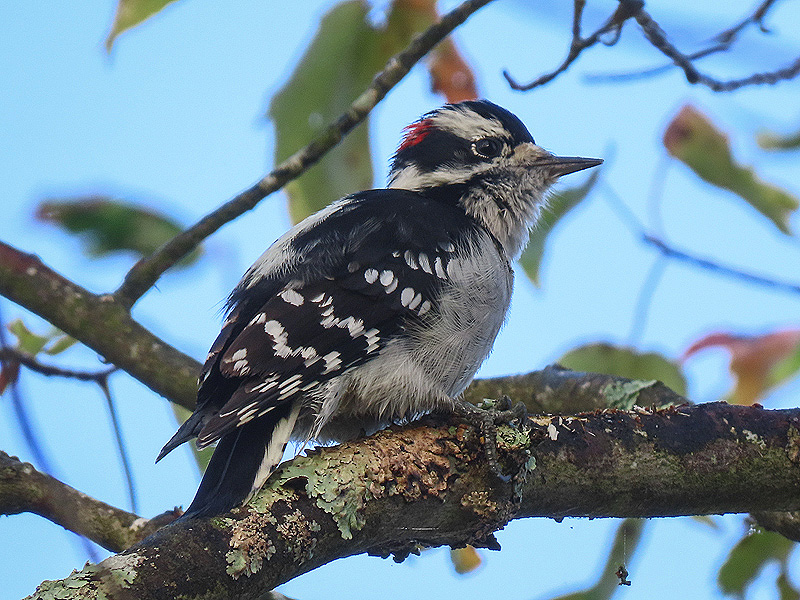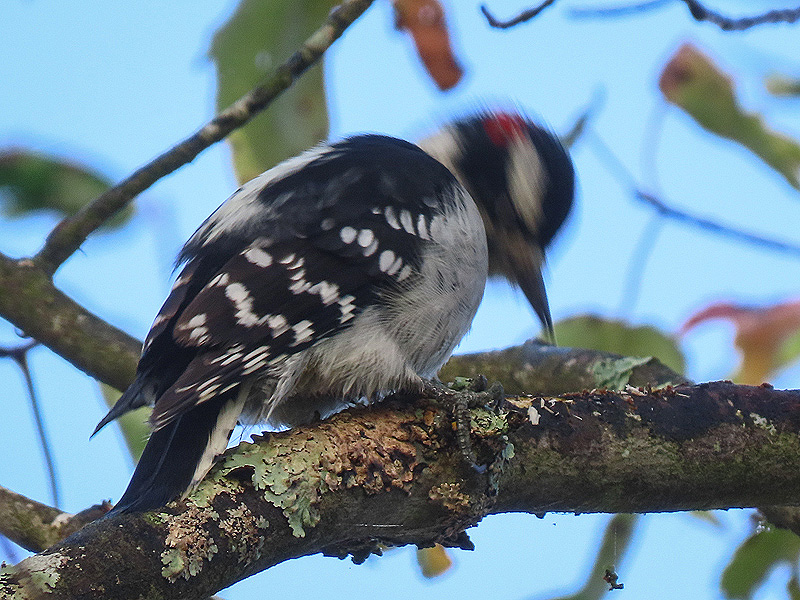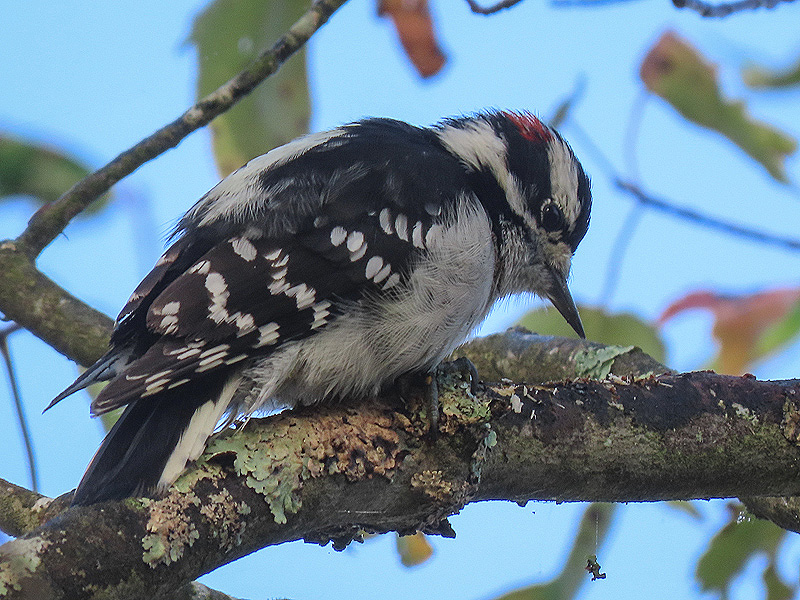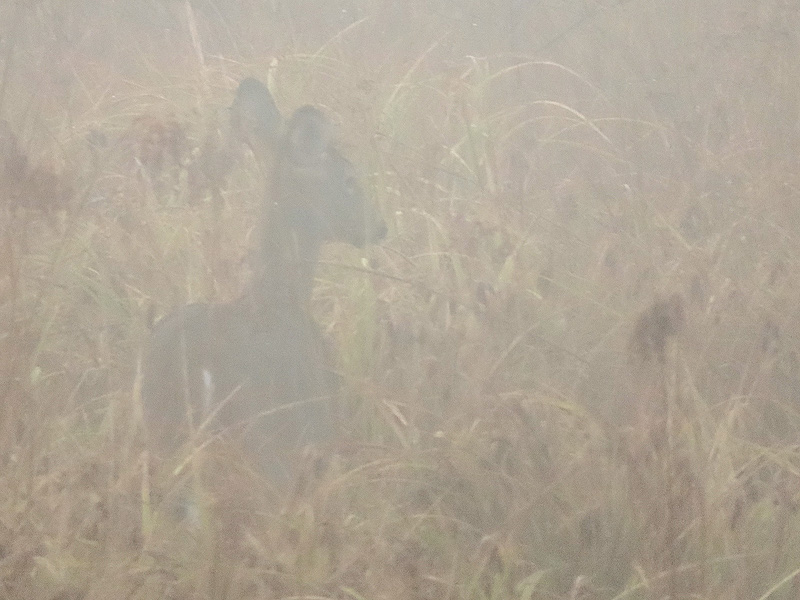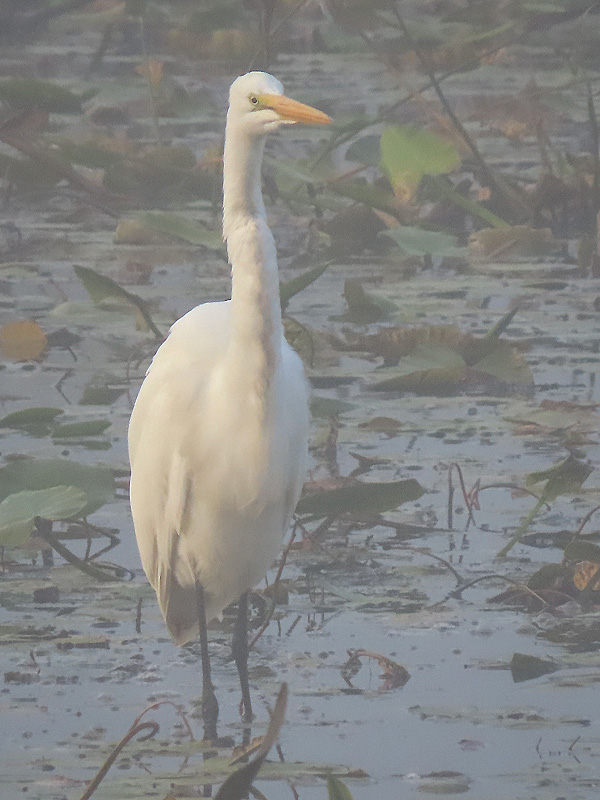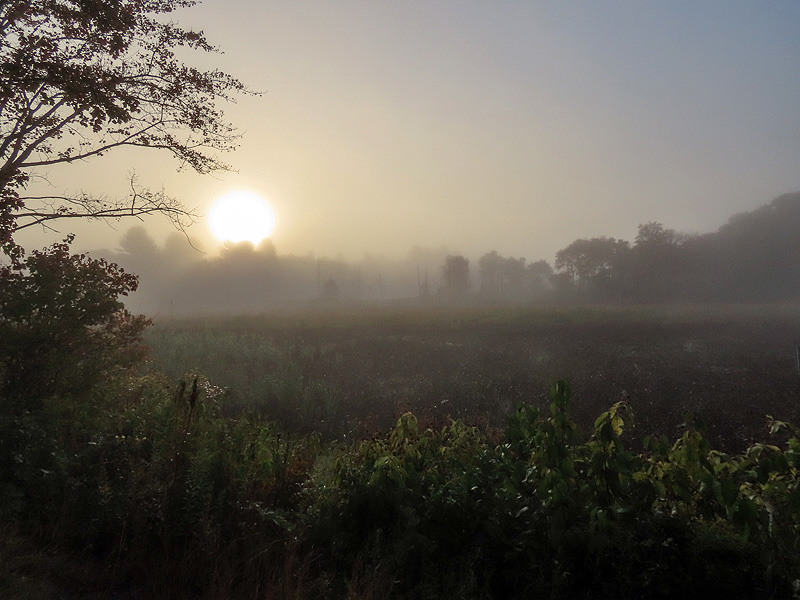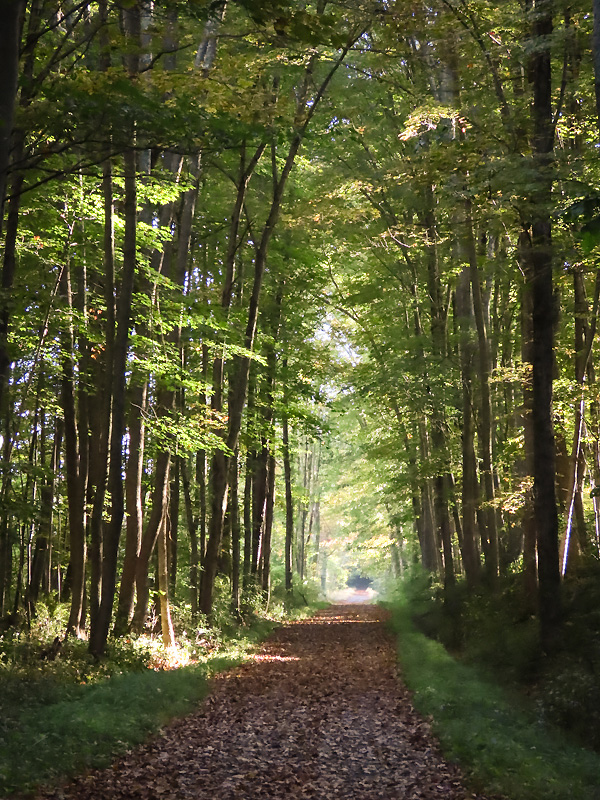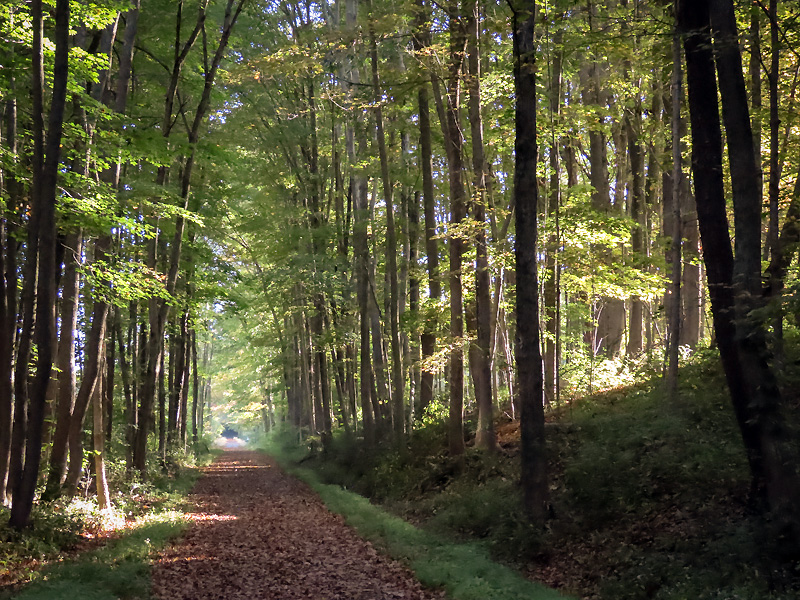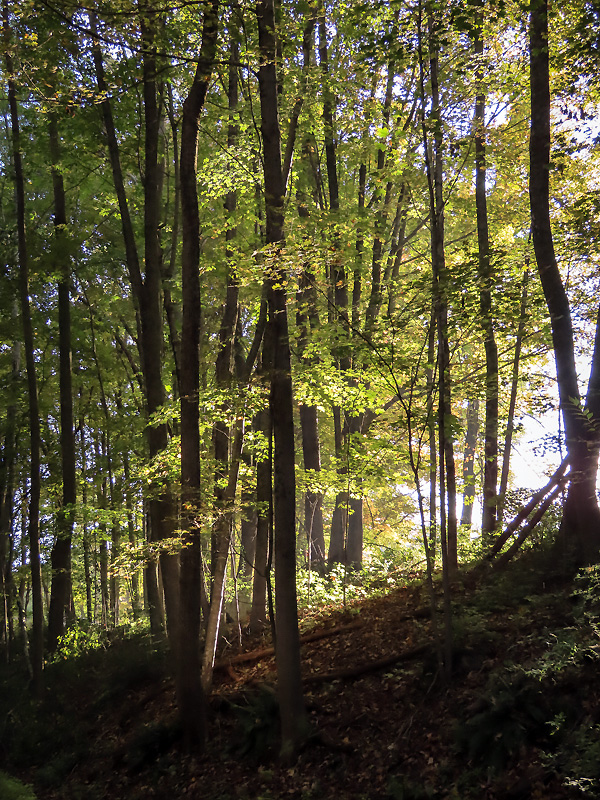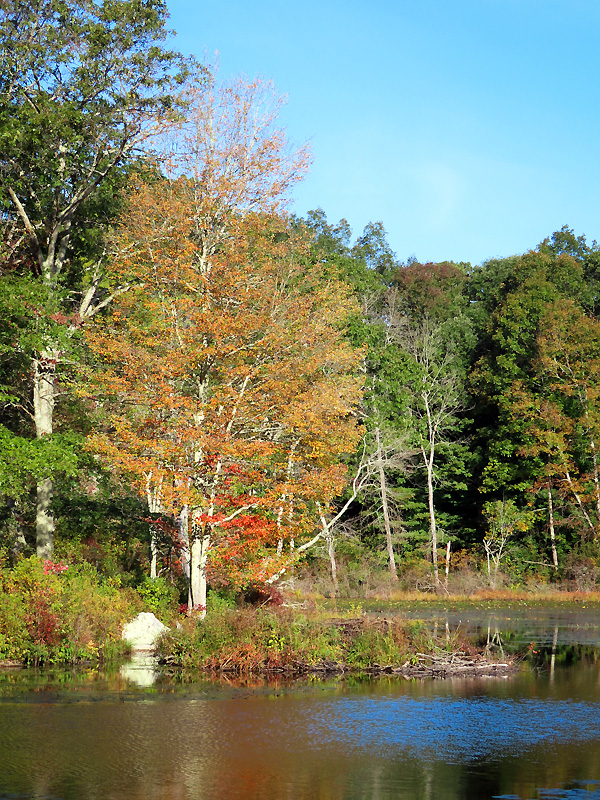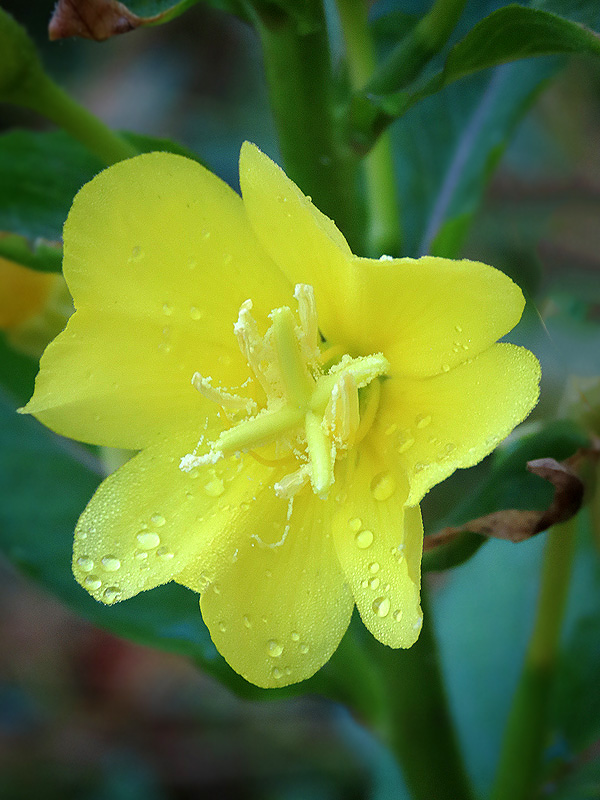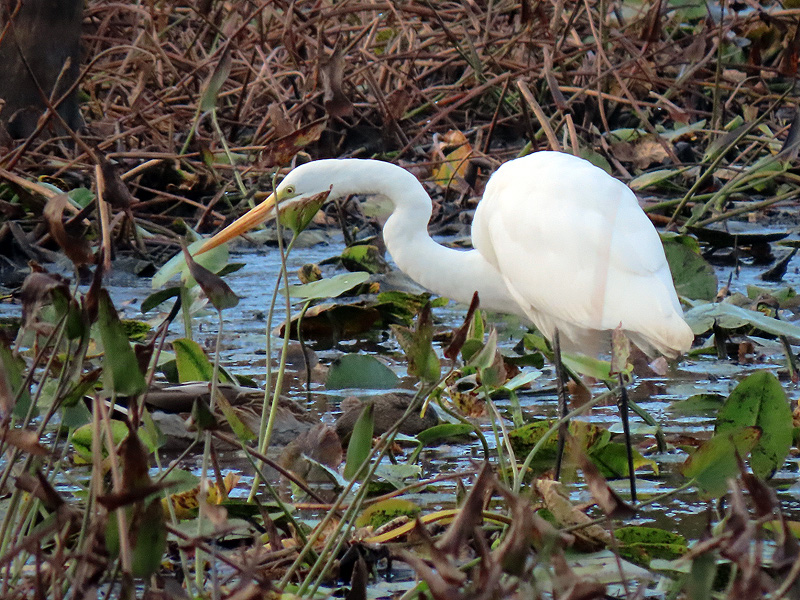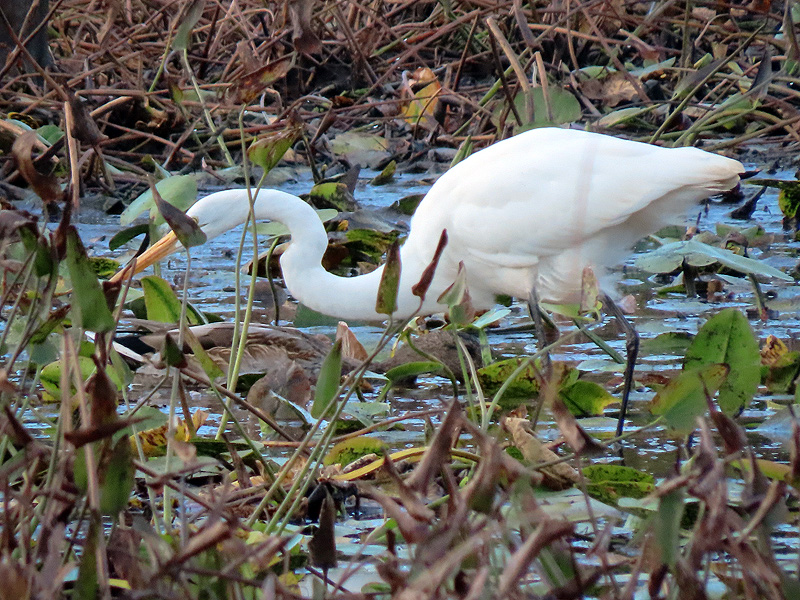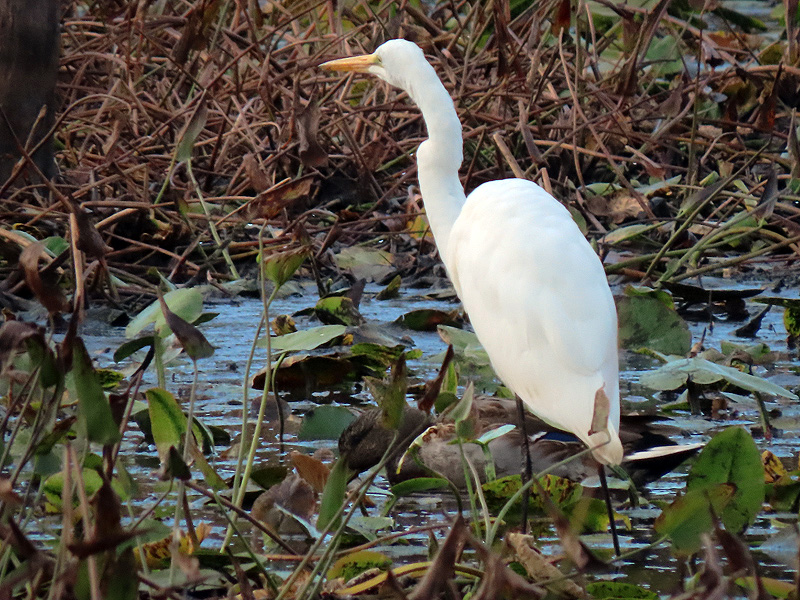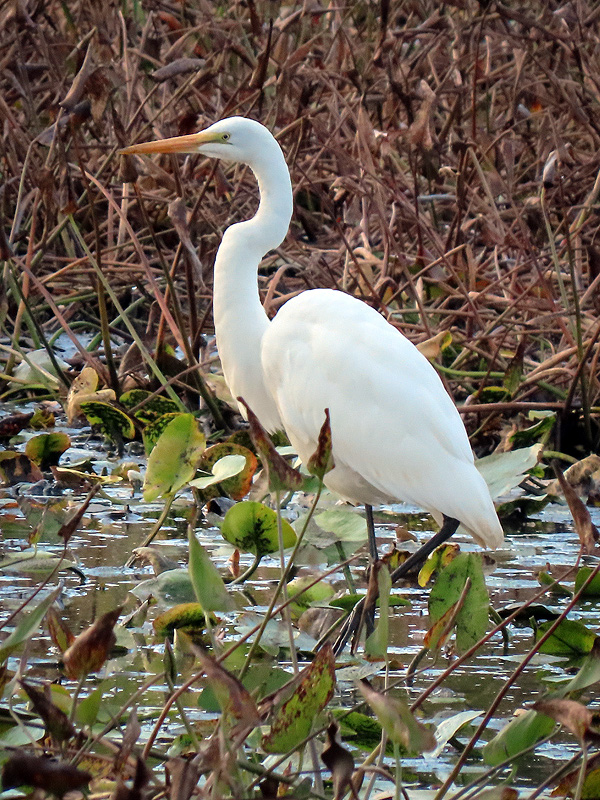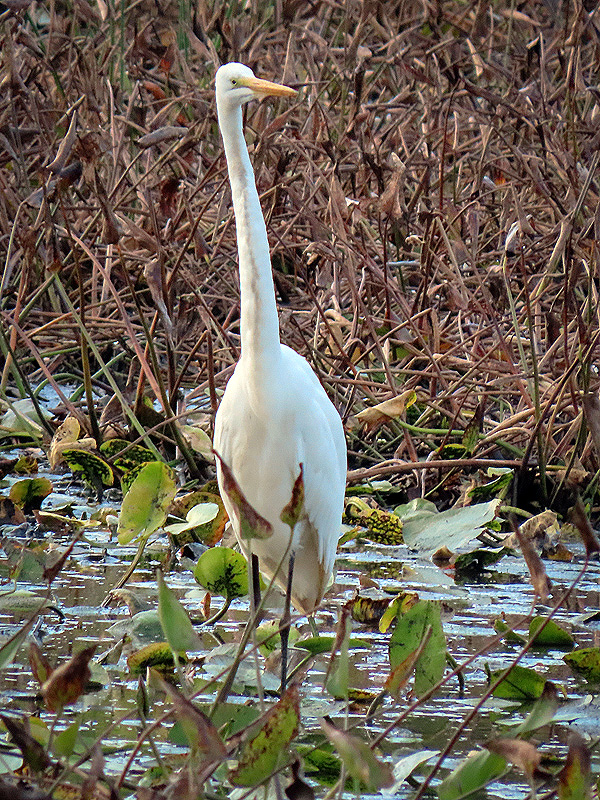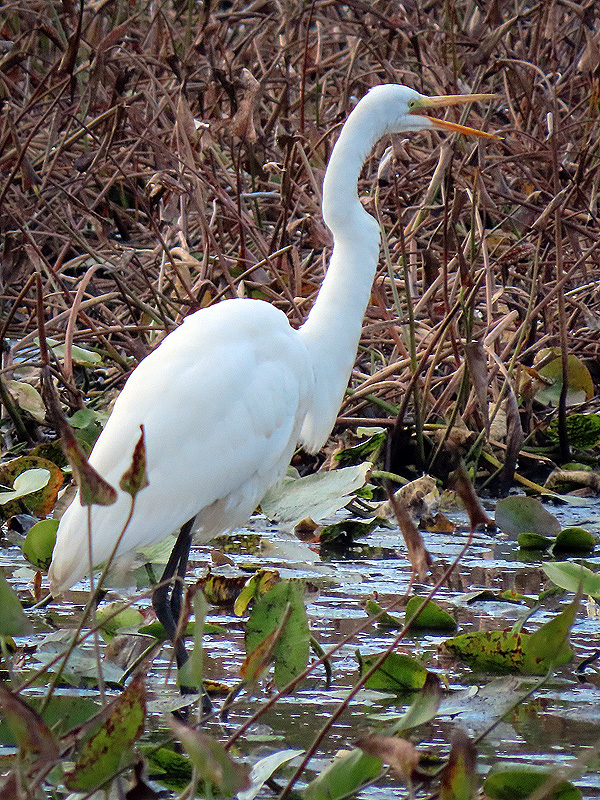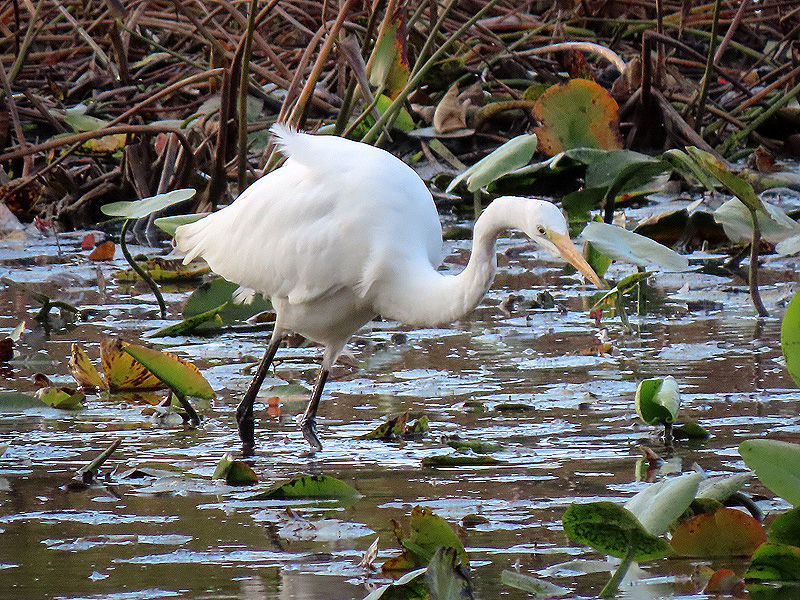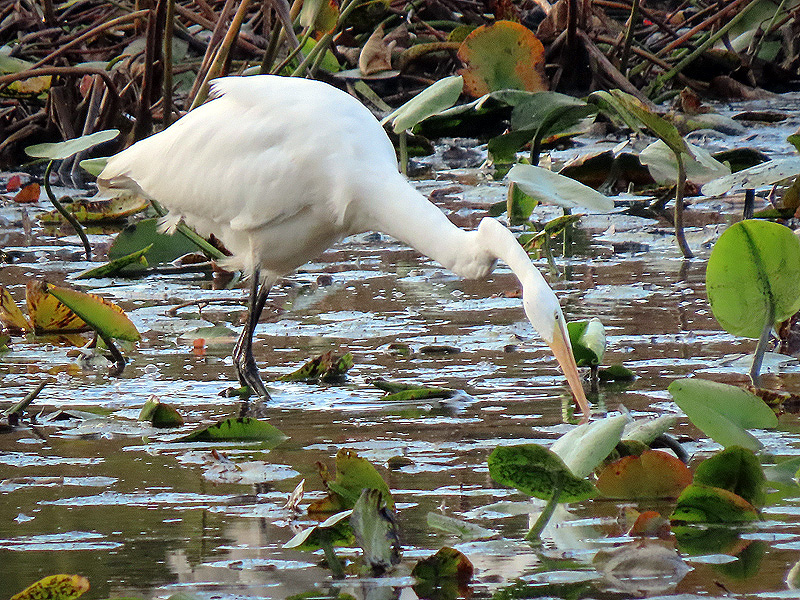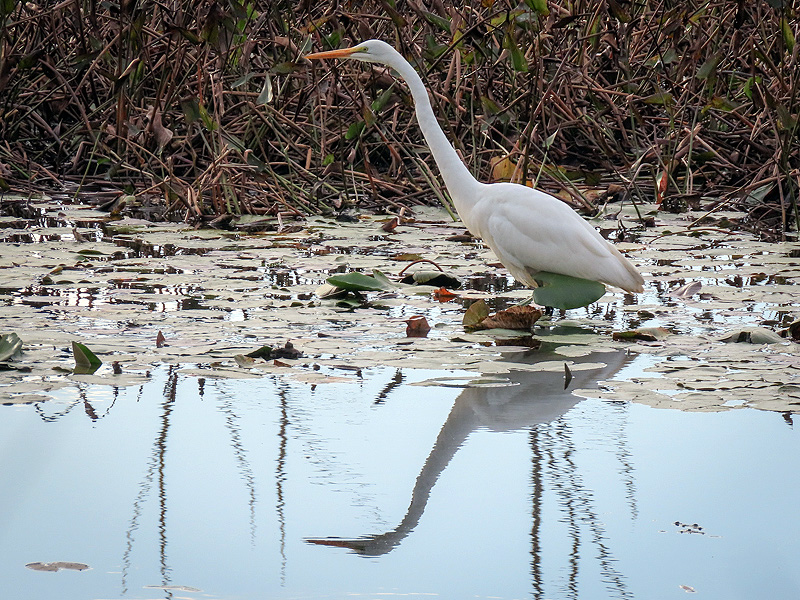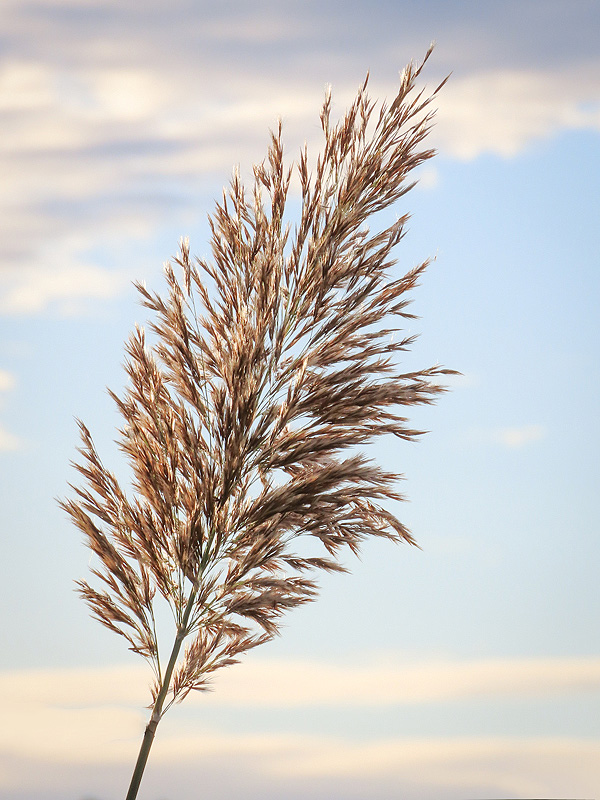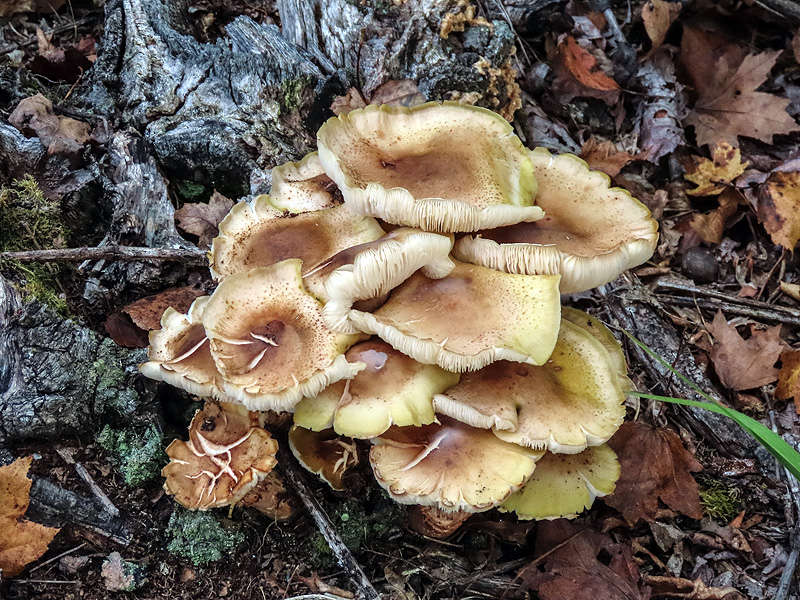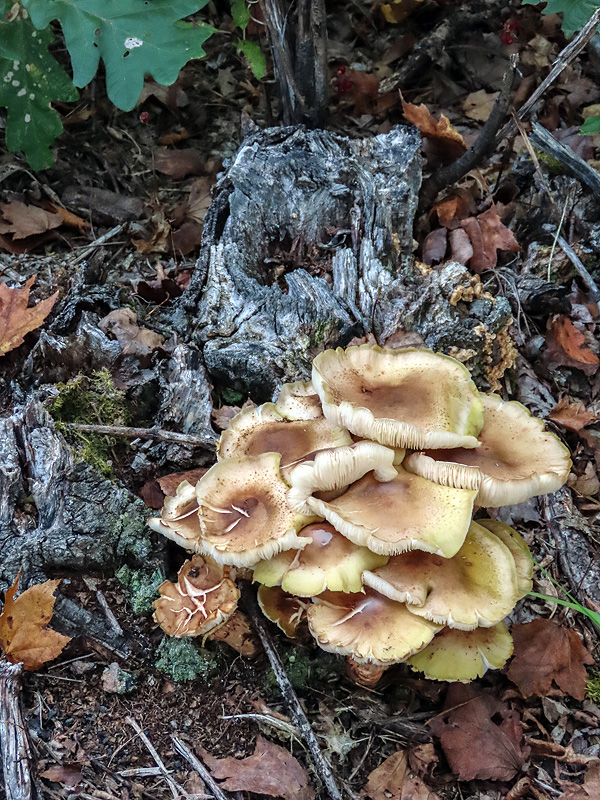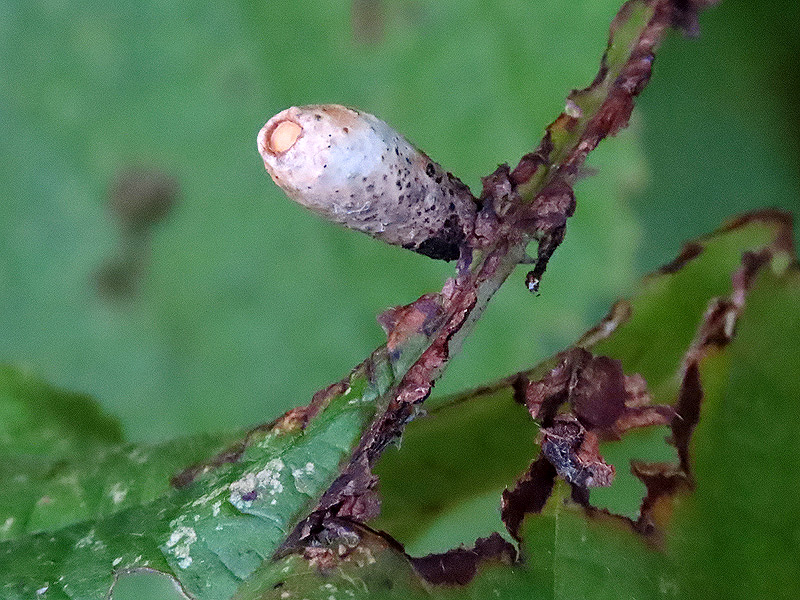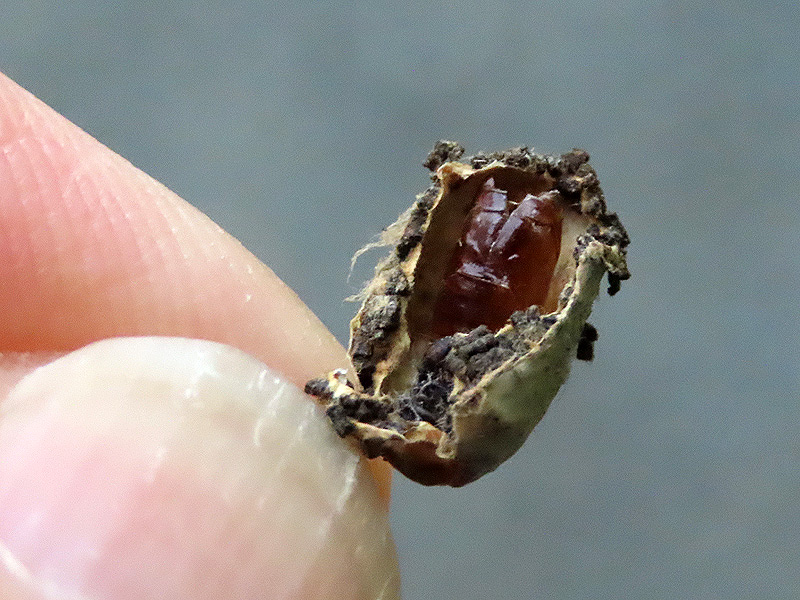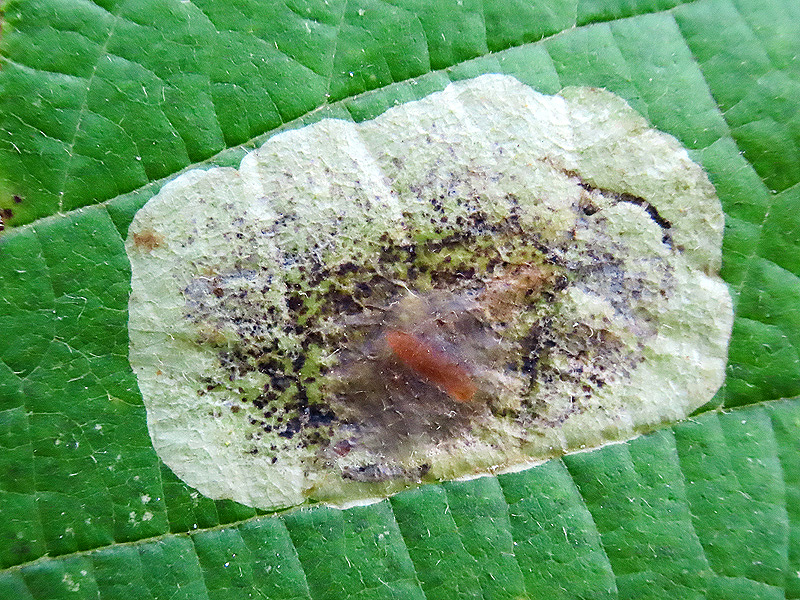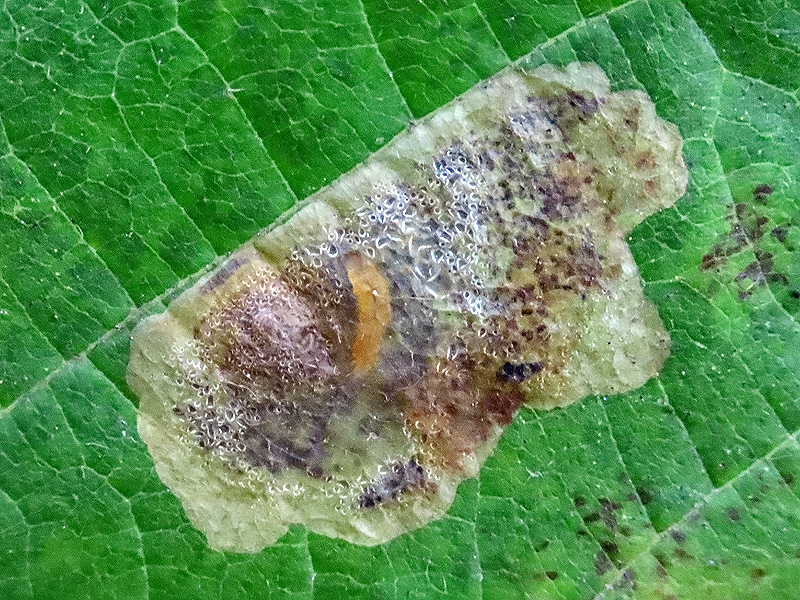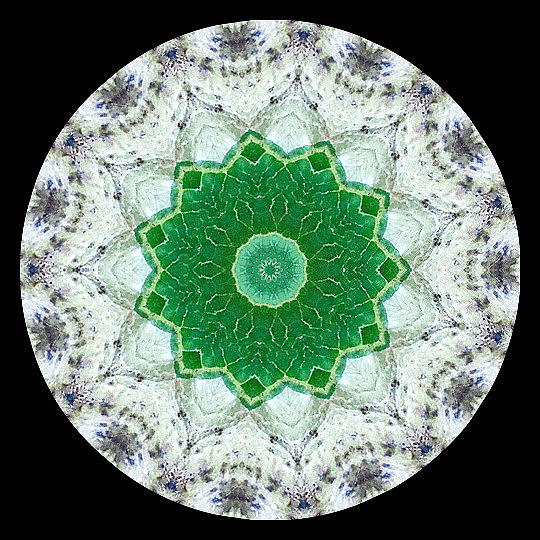Along the Air Line... 2019 - Fall, Part 1 The Air Line Trail in Eastern Connecticut - Stan Malcolm Photos |
HOME: Air Line... 2019 Pages Menu Stan's FlickR Albums |
September 23rd. First full day of Fall and the Great Egret (Ardea alba) was still around. |
|
Some color in the Red Maples (Acer rubrum). |
|
|
Virginia Creeper (Parthenocissus quinquefolia). |
|
|
This afternoon I walked a short stretch of the Hop River Trail in Willimantic, starting at Mackey's and walking west over the newly decked Willimantic River Bridge. |
In the distance you can see the Old Route 6 and 66. |
A closer view. |
The trail surface still needs work. In places, railroad ties and roots, marked in red, need to be removed. In other places, the surface is trap rock or simply packed earth and weeds. |
In several places not far west of the bridge, there remain signs of the homeless community formerly encamped there. |
|
September 24th. Another foggy morning. |
|
|
Large Snapping Turtle (Chelydra serpentina) checking for traffic. |
|
|
|
Jaws and claws. |
Soon after I passed, it high-stepped across the trail. |
September 25th. Large Maple Spanworm moth (Prochoerodes lineola). A common moth but highly variable in coloration. See: http://mothphotographersgroup.msstate.edu/species.php?phylo=911432 |
September 26th. Spiderwebs wet with foggy dew. |
Spiderwebs make great starting points for digital kaleidoscopes. |
|
|
|
|
|
|
|
|
|
A male Downy Woodpecker (Picoides pubescens). |
|
|
|
September 27th. |
September 28th. White-tailed Deer (Odocoileus virginianus) in heavy fog. |
Great Egret (Ardea alba), ditto. |
|
|
Fog lighter further west in the marsh. |
September 29th. East of Route 207. Leaves falling but not much color this year. |
|
|
|
Common Evening-Primrose (Oenothera biennis) still blooming right by the road. |
September 30th. Mallards (Anas platyrhynchos) and the Great Egret (Anas alba) seem unbothered by close proximity. |
Perhaps the mallards scare up prey for the egret? |
|
|
|
|
|
|
|
A little later, the egret found a rare patch of open water, albeit still very shallow. |
Common Reed (Phragmites australis). |
ID help needed. |
|
Found on American Hazelnut (Corylus americanus). Charley Eiseman writes, "Seems safe to say the tube is from Acrobasis coryliella (should be about 12 mm by 5 mm)." It is. (Check out Charley's fantastic blog; buy his book! https://bugtracks.wordpress.com/) |
He also writes, "There is one generation, with adults flying in July and early August, so an empty pupal skin makes sense." |
Also on American Hazelnut, several blotch mines, made by leaf miners in the moth family Gracillariidae. Charley writes, "The mines are definitely Cameraria, and should be C. corylisella." The tiny moth looks like this: http://mothphotographersgroup.msstate.edu/species.php?hodges=817 |
In this photo and the one above, the tan object is the moth larva. The dark specks are the larva's "frass" - poop in other words. |
In this mine, the larva has formed a circular overwintering chamber. |
Proof, if any was needed, that beatiful digital kaleidoscope captures can be made from the most unlikely original images (e.g., the photo just above). |
These image were created using Jim Bumgardner's "Make your own Kaleidoscope" software available free online at http://www.krazydad.com/kaleido/ Here's how to do it. If you enjoy making and saving your own, consider a PayPal donation to Jim via the Krazydad site. |
Finally, here in central Connecticut, PhotoConnection of Colchester (https://photoconnectionoc.com/) is able to print your captures onto 4" ceramic tiles. |
